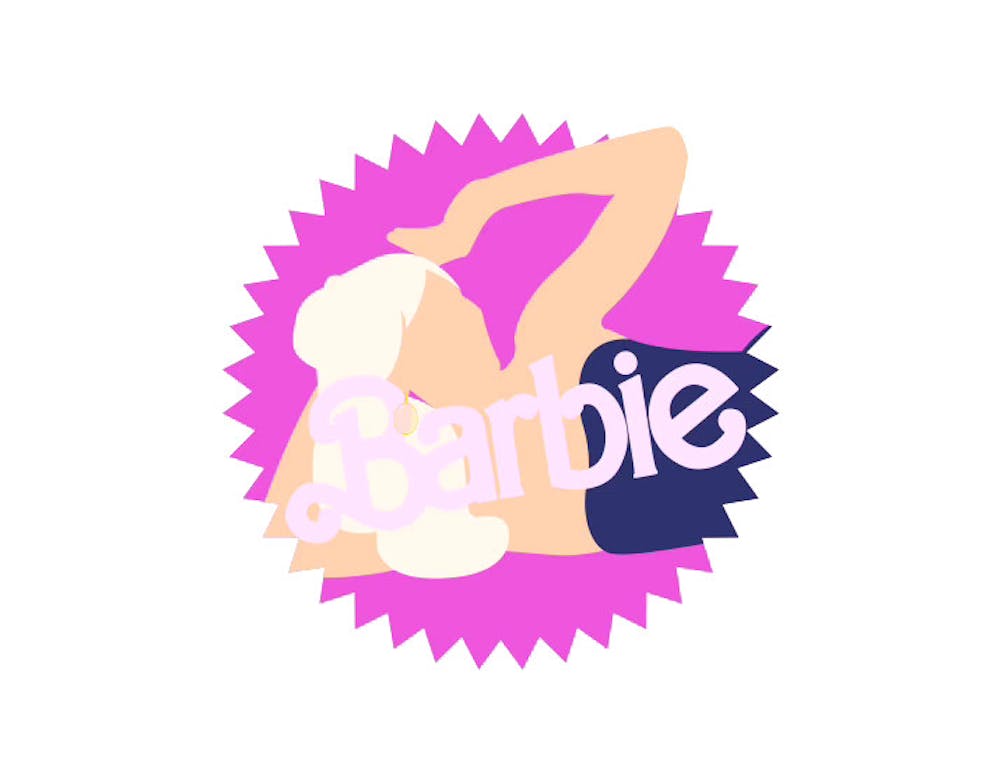Margot Robbie and Ryan Gosling stole the hearts of their audiences this summer. The release of the Barbie movie on July 21, 2023, was sensational, accompanied with all varieties of movie theater attendees — pink-clad fangirls to eye rolling critics.
It is the top grossing movie of the year, and it was just released to streaming platforms as well as DVD and Blu Ray. Social media endlessly encourages renditions of this movie, and so a resurgence of Barbie's presence is inevitable, especially during the spooky season full of costume parties.
In fact, about 1.8 million people plan on dressing up as Barbie for Halloween this year, making it one of the most popular Halloween costumes this season.
Part of this popularity is due to the wholesome, important message presented in the Barbie movie. While some critique of Barbie is valid, there is great wisdom offered to our world through Greta Gerwig's incredible film.
For decades now, it seems like people have been taking away unhealthy identity messages, along with unrealistic body image standards, beauty ideals or over-obsessions with job and appearance from Barbie. Throughout the movie, though, Barbie and Ken traverse between Barbieland and “Real World” to convey crucial messages and, hopefully, redeem those negative views.
Femininity — in some cases hyperfemininity — is something to be aware of and even supportive of. That’s the whole point of the Barbie movie; it is a celebration of femininity and a presentation of how that fits into the real world.
This is all presented through filters of histrionics, ridiculousness and humor.
The opening scene presents a dramatic clip of young girls playing with baby dolls, and then magnificent Barbie crashes the scene. The foundational message is made clear: girls can be girls, not mothers, not wives or girlfriends — just girls who have fun and successful lives.
When Barbie encounters girls in the real world, they criticize her for the way she set back the feminist movement and created an unhealthy body image standard. Barbie is brought to tears because she thought that young girls would be inspired by her actions instead of degraded by comparison to her appearance and lifestyle.
This scene seems like an apology for the harm that Barbie dolls have created, along with a call to recognize their true purpose. They are supposed to inspire young girls, not limit them.
One of the main critiques of this movie was the way it represented and talked about men. This movie is not anti-men, but it is anti-patriarchy. If people can’t see the difference between the two, the chastisement of patriarchy probably is hurtful.
The character arc of Ken is compelling. He begins the movie as a naïve, excluded character. Then, he enters Real World and learns about patriarchy. He brings this back to Barbieland, and conflict breaks out. Eventually, he realizes that his actions are bad and harmful, and he sees that patriarchy is exhausting and deficient.
Ken's character is meant to challenge the definition of a man. Masculinity is not upkeep of authority or purpose only in light of another. As silly as it has become, “Kenough” is self-contained purpose, security and acknowledgement of inherent identity.
It’s true that the Barbie dolls excluded the Ken dolls at first, but patriarchy and violence do not make circumstances better. The movie promotes the message that single-gender-dominated societies destroy themselves. Neither patriarchy nor matriarchy is healthy; it must be a balanced inclusion of everyone.
The resolution of this movie looks like more inclusion for the Ken dolls, as well as many characters realizing that they are just enough as they are.
Some people were disappointed by the lack of romance between Barbie and Ken, but one of the main messages in this movie is about young girls learning how to be women in society. Romance isn’t everything. Relationships are good, but they are not necessary to be a mature, successful person.
Kate McKinnon’s Weird Barbie was a crowd favorite. Not only was this creative character extremely realistic — as a child who played with Barbie dolls, the concept of having a “weird Barbie” is uncannily correct and hilarious — but she also contributes thematic insight.
Part of the plot was about including her too. Bringing in social outcasts or those who are not members of the dominant culture is vital. The Barbies end up apologizing to her, and Weird Barbie plays an integral role in solving the conflict between the Barbies and the Kens.
This movie reteaches society that “girly” or “like a girl” or pink or glitter or wanting to be pretty are not bad contrivances. Hyperfemininity is often seen as annoying or over the top, but the Barbie movie is a call to appreciate the concept of femininity in its many forms and manifestations.
Furthermore, it is a movie about being broken by bad things, experiencing emotions and then persevering. Relationships and working with others is the only way to let things heal and improve.
So when you see countless Barbies in neighborhoods trick-or-treating or in costume parties this Halloween night, hopefully it will bring a smile to your face or a thought to your mind — our society is relearning how to appreciate everyone for who they are.
This process should not be stifled, laughed at or discouraged. As trivial as it may seem, Barbie and her messages are important to the state of our humanity. So even if you hear “Hi, Barbie!” approximately 1.8 million times, try to remember the admirable and delightful meaning behind the costume.
Do you like this story? The Plainsman doesn't accept money from tuition or student fees, and we don't charge a subscription fee. But you can donate to support The Plainsman.

Sami Grace Donnelly, senior in English literature, began writing for the Plainsman in the fall of 2021. She has served as a columnist, writer abroad, Opinion Editor, managing editor and is now Editor-in-Chief of the Plainsman.





